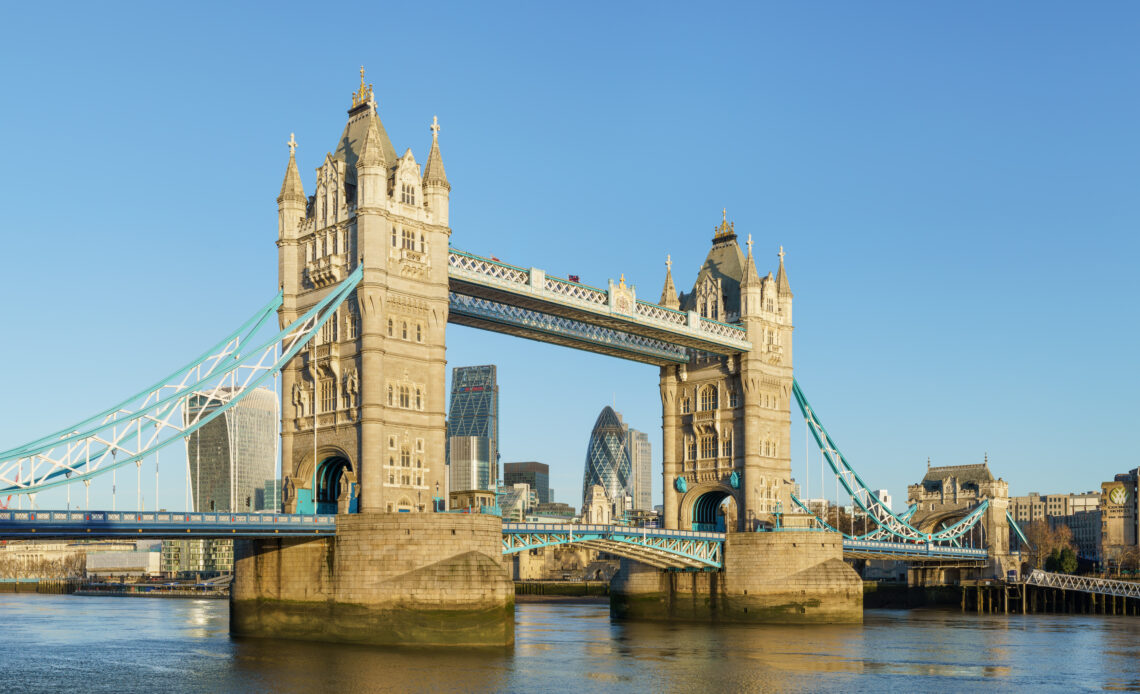
The bridges that stretch across the River Thames in London are major landmarks in the city, with many bearing significant royal connections. We’ve taken a selection of the capital’s bridges and explored the many interesting links.
Tower Bridge:
Tower Bridge is perhaps one of the most iconic symbols of the capital and is connected with the Royal Family in more ways than one. The bridge was officially opened on June 30, 1894, by the Prince and Princess of Wales (the future King Edward VII and Queen Alexandra). More recently, the bridge was painted red, white and blue in honour of Queen Elizabeth II’s silver jubilee in 1977.
London Bridge:
Several crossings have existed in the place of the current London Bridge, with the oldest dating back to the Roman times. Many of the structures have shared the name London Bridge, yet the ‘modern’ bridge was opened on March 17, 1973, by Queen Elizabeth II. London Bridge was also the site where the heads of criminals and traitors were displayed on a spike after their beheading. Perhaps most famously, the head of Scottish rebel William Wallace was placed on the bridge by order of King Edward I. King Henry VIII also had the head of Lord High Chancellor Thomas More placed on the bridge after he refused to recognise the annulment of his marriage from Catherine of Aragon.
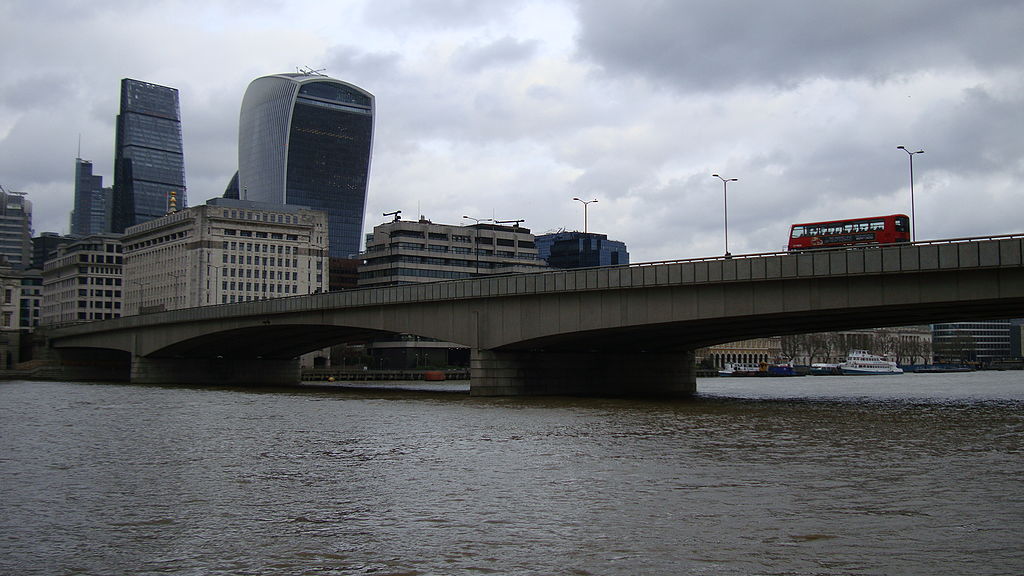
London Bridge by Bartholomeus Thoth
Cannon Street Railway Bridge:
When Cannon Street Bridge was opened in 1866, it was initially named Alexandra Bridge in honour Princess Alexandra of Denmark who married Prince Edward, The Prince of Wales in 1863 (the future King Edward VII and Queen Alexandra). As with several of the bridges, Cannon Street Railway Bridge was sailed under by Her Majesty Queen Elizabeth II and several other royals during the Thames Diamond Jubilee Pageant.
Southwark Bridge:
The original structure was named Queen Street Bridge in honour of the street it leads off of on the northern side. It was officially opened on June 6, 1921, by King George V and Queen Mary. There is a plaque halfway along on the western side which reads, “Rebuilt by the Bridge House Estates Committee of the Corporation of London 1913-1921. Opened for traffic by Their Majesties King George V and Queen Mary 6th June 1921…”
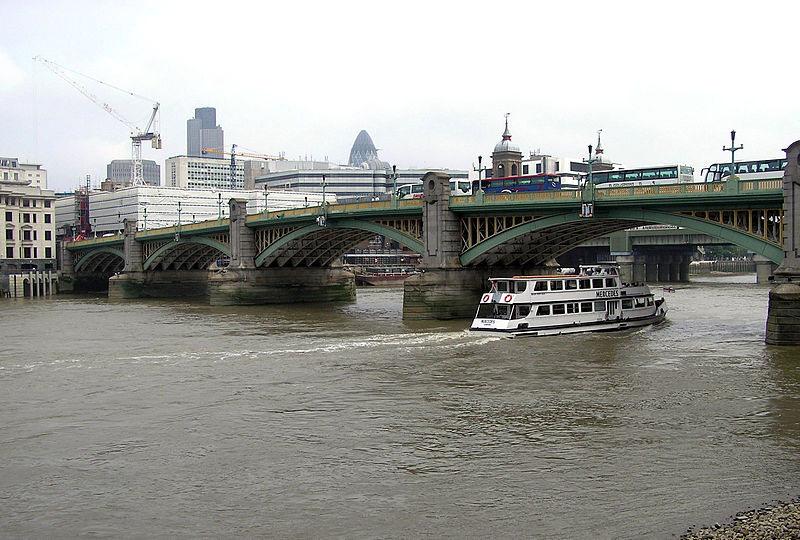
Southwark Bridge
Millennium Bridge:
The newest crossing over the River Thames was opened in 2000, with construction beginning in 1998. However, on its opening day, it was nicknamed the ‘Wobbly Bridge’ due to its obvious swaying motion and soon closed. The reinforced bridge re-opened in February 2002 and was dedicated to Queen Elizabeth II.
Blackfriars Bridge:
The current Blackfriars Bridge was opened on November 6, 1869, by Queen Victoria. Following the ceremony, the Queen travelled up Farringdon Road and opened the Holborn Viaduct. Almost 150 years later her great-great-granddaughter sailed under the bridge in a pageant to celebrate her 60 years on the throne.
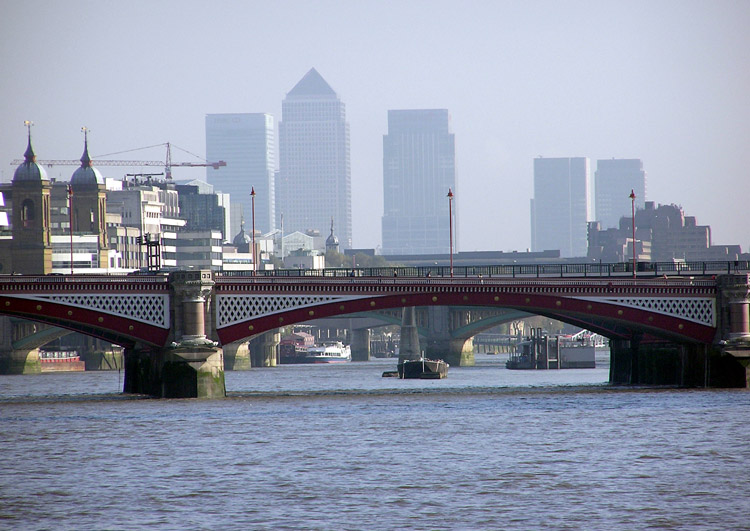
Blackfriars Bridge
Waterloo Bridge:
At the time of its construction, it was the widest bridge in the capital. Waterloo Bridge was opened on June 18, 1817, by the Prince Regent (later King George IV) and the Duke of Wellington to mark the second anniversary of the Battle of Waterloo. The impressive structure also enthused foreign royalty, with Tsar Alexander I of Russia visiting the crossing during his trip to London in 1814.
Golden Jubilee Footbridges:
Back in 1996, a competition was launched to design two footbridges to flank the existing Hungerford Bridge which would commemorate the 50th anniversary of The Queen’s coronation. The structures opened on July 2, 2003, by The Queen’s cousin, Princess Alexandra, the Honourable Lady Ogilvy.
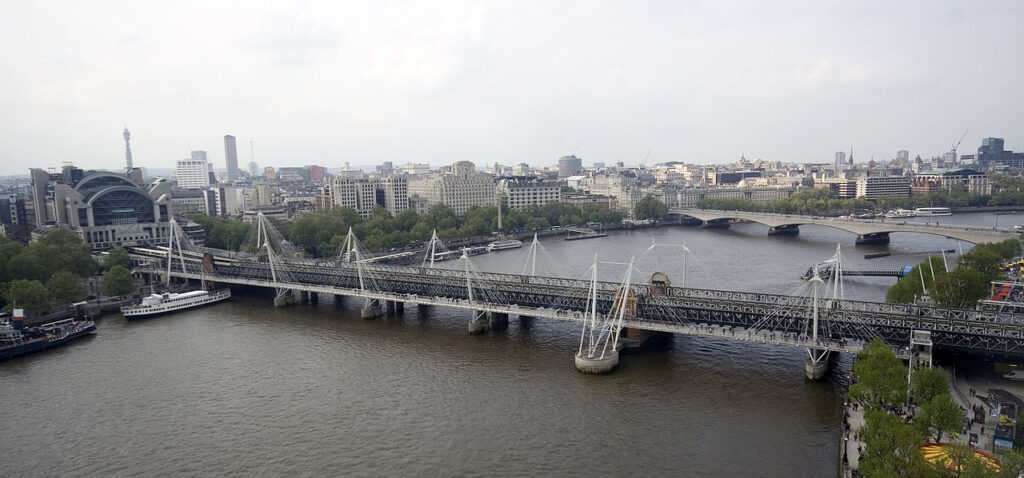
The Hungerford and Golden Jubilee bridges as seen from the London Eye, with Waterloo Bridge in the background
Westminster Bridge:
The most modern Westminster Bridge was opened on Queen Victoria’s 43rd birthday (May 24, 1862). In honour of this occasion, there was also a 25-gun salute to celebrate The Queen’s 25 years on the throne.
Lambeth Bridge:
Opened on July 19, 1932, by King George V and Queen Mary. According to the Illuminated River Project website, it is also rumoured that both King James I and Oliver Cromwell fell off of Lambeth Bridge at some stage.
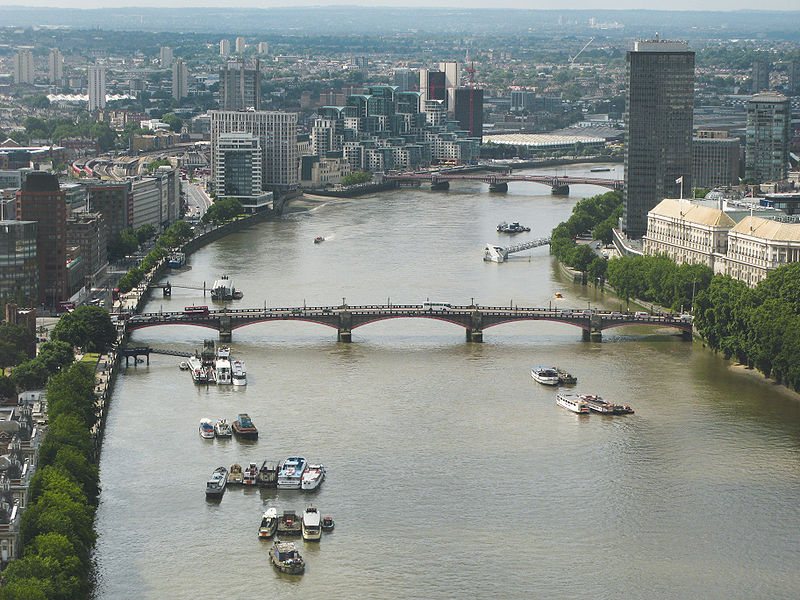
Lambeth Bridge with Vauxhall Bridge in the background (Photo: Justin Norris)
Vauxhall Bridge:
Vauxhall Bridge was opened on May 26, 1906, by the Prince of Wales (the future King George V). This crossing was also the fourth that Her Majesty and several other royals sailed under during the Thames Diamond Jubilee Pageant in 2012.
Grosvenor Railway Bridge:
This is the widest bridge in the capital and is comprised of ten individual structures. Grosvenor railway bridge was named after the landowners of which the bridge is built upon, this being the Grosvenor Family. The royal link lies in how the family are able to trace their lineage back to Hugh Le Grande Veneur, who was a close aide to William the Conqueror.
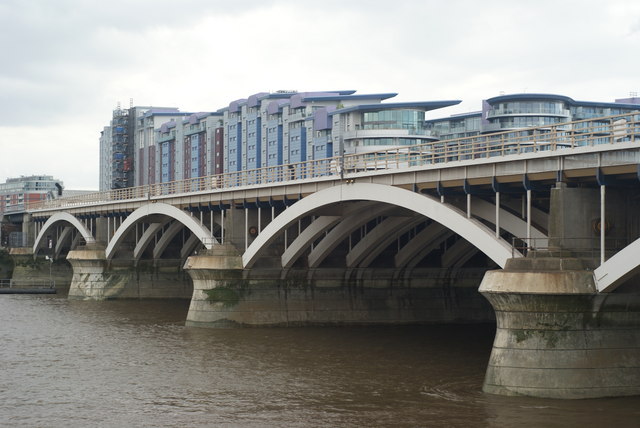
Grosvenor Bridge by Peter Trimming CC BY-SA 2.0
Chelsea Bridge:
It was originally named Victoria Bridge after Princess Victoria, The Princess Royal, but after some negative public reviews about the wobbly nature of the structure, the name was quickly changed to Chelsea Bridge. This was decided as, in the event of the bridge collapsing, the Princess and the Royal Family would be associated with it. The bridge was opened in 1937 by Canadian Prime Minister Mackenzie King.
Albert Bridge:
Rather obviously the namesake behind this final bridge is Queen Victoria’s beloved consort, Prince Albert; however, there are several other royal connections which make up its history. Much like the Chelsea Bridge, it was originally named Victoria Bridge and was even opened and walked on by the monarch and two of her daughters on April 3, 1858. There were huge debates and demonstrations over the toll system on the bridge, so much so that Londoners did not use the bridge. The Prince of Wales (later King Edward VII) declared this bridge and its neighbours toll-free on May 24, 1879. The bridge was redesigned and re-opened by Canadian Prime Minister, William Lyon Mackenzie King on May 6, 1937, as he was in the capital for the coronation of King George VI.
"; n.innerHTML = "window._taboola = window._taboola || [];_taboola.push({mode:'thumbnails-a', container:'taboola-below-article-thumbnails', placement:'Below Article Thumbnails', target_type: 'mix'});"; insertAfter(t, e); insertAfter(n, t) }injectWidgetByMarker('tbmarker');

